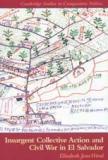Voice of the People
El Salvador’s civil war took 175,000 lives, and during the dozen years of its duration human rights abuses ran rampant. Those who denounced the abuses—like Archbishop Oscar Romero, the six Jesuits at the University of El Salvador and other activists—were targeted for assassination. So, too, were the four missionary women murdered on Dec. 2, 1980. Now, just over a decade after the war ended with the peace agreement signed in Mexico in 1992, Elisabeth Jean Wood has written a timely account of the war as seen through the lens of its effects on four “case-study areas.”
Ms. Wood, an associate professor of politics at New York University and a visiting research professor at the Santa Fe Institute, is a scholar whose scholarship shows on every page—a circumstance that makes the reader’s journey through the book one that requires perseverance, because this is not an easy read. But the perseverance is worthwhile, because she manages to bring the war before the reader’s eyes, primarily through the words of the many men and women she interviewed over a period of almost 10 years, from 1987 to 1996.
Most of those interviewed (approximately 200, with a number of them interviewed several times) were campesinos, poor farmers who scratched out a bare living from the land—small plots of their own small parcels, or the large holdings of landowners for whom they worked. But she also spoke with military personnel and wealthy Salvadorans, and this broad approach lends the book a balanced perspective. The very fact that so many people were willing to speak with her testifies to the level of trust she achieved with them. Indeed, her inquiries, she tells us, “met with the enthusiastic collaboration of many residents of contested zones...irrespective of class, occupation or political affiliation.” Wood is physically courageous: her travels often took her into dangerous areas, and she realizes her good fortune in observing that she “was never caught in the wrong place at the wrong time.” Such luck, she adds in something of an understatement, “is a not-to-be-unappreciated aspect of fieldwork in settings of political violence.”
Early on, Wood explains the causes of the war in terms of what she calls patterns of economic, political and social exclusion. The latter phrase refers to the campesinos who, prior to the war, were at the mercy of the oligarchy—rich landowners who needed them to work on their coffee and cotton plantations, but who exploited them by paying the kinds of substandard wages that led people like Archbishop Romero to speak out against this and other injustices. The military establishment protected the rich landowners, with soldiers frequently billeted on their estates to provide armed security. The alliance of these two powerful groups created a deadly combination that all but smothered whatever aspirations the campesinos might have had in regard to adequate food, shelter, medical care and education for their children.
Maps are an important aspect of the book, not least because most represent the laborious work of campesinos themselves. The fact that they willingly entered into this unaccustomed task is yet another indication of the degree of trust Dr. Wood established with them. In commenting on their efforts, she says: “It was evident that the insurgent campesinos who participated in the [map-making] workshops took pleasure and pride in the task, which was seen as an invitation to document the achievements of the cooperatives”—achievements, that is, in the form of land claimed by the insurgents. Photographs, too, are sprinkled throughout the book, and like the maps, they lend a sense of concrete immediacy to the overall account of the war’s impact. One photograph, for example, a night scene, shows an elderly woman delivering tortillas at an insurgent campsite. The caption notes that supplies provided by local people were frequently delivered after dark to lessen the risk of discovery by government forces.
Not surprisingly, the better-off suffered least from the war. The inhabitants of one town included the owners of two straw-hat factories. Although they lost their factories, they were able to re-establish themselves in the nation’s capital. And the very rich not only emerged virtually unscathed, but in some cases prospered in the war’s aftermath. Ms. Wood says of one rich family: “At war’s end, the Llach family, whose heiresses included President Alfredo Christiani’s wife, appeared to be expanding their holdings...with the purchase of an additional estate in 1992.”
As for the campesinos, though still poor, they had achieved significant gains. The prewar domination by the rich and their military allies was largely gone, and campesinos could claim, as Ms. Wood puts it, “an unprecedented degree of representation” in organizations and cooperatives and political parties. In the case-study areas, agrarian reform in 1980 led to a transfer of farmland, though considerably less than what the insurgents had hoped for. High levels of postwar crime rates added to the difficulties of day-to-day life, as did the two earthquakes that wracked parts of the country in 2001. But the peace process itself at least resulted in “a significant democratization of political power.” The cost, however—175,000 lives—was heavy indeed.
This article also appeared in print, under the headline “Voice of the People,” in the April 19, 2004, issue.








